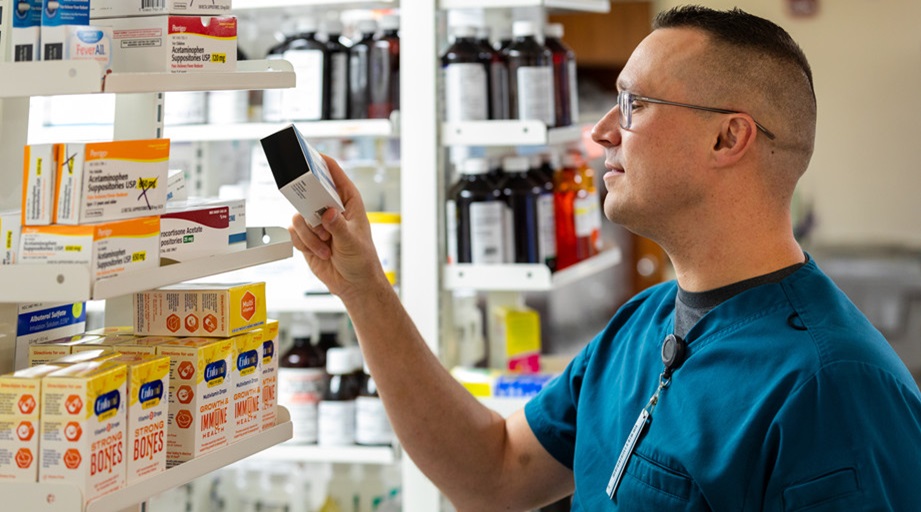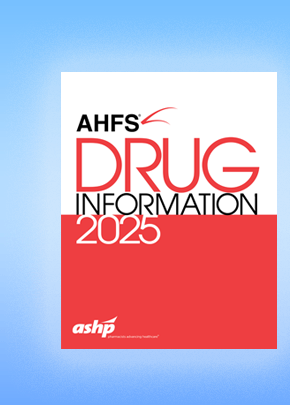

It’s standard practice to prescribe naloxone for every patient at the University of North Carolina School of Medicine’s chronic pain program who is also prescribed an opioid, said Timothy Ives, professor of pharmacy and director of the clinic, located in Chapel Hill.
Just as important, he said, is ensuring that every healthcare provider, resident, and trainee who serves at the clinic learns how to use naloxone and can teach patients and their family members how to recognize an opioid overdose and administer the reversal agent.
Ives in late May put his own training into practice when he reached for a naloxone kit to help a patient who was overdosing in the clinic’s hallway. He said the patient survived and returned a week later for follow-up.
Although the clinic emphasizes to patients the importance of having naloxone, Ives said an initial analysis of survey data from January through April of this year indicated that about one third of patients didn’t get their naloxone prescription filled.
To keep patients’ costs down, the clinic prescribes a generic formulation of naloxone injection and instructions for intranasal administration using a syringe and atomizer. Nevertheless, Ives said, patients cite “financial issues” as the most common reason for not having their naloxone prescriptions filled.
Drug costs are also a concern for patients with chronic pain at Virginia Mason Medical Center in Seattle, said Ambulatory Pharmacy Manager Amanda Locke.
“Our biggest barrier is insurance coverage and the cost to patients, because many of them won’t get [naloxone] if it costs too much,” said Locke, whose practice focuses on complex chronic pain cases. “It’s very frustrating, because some insurance plans cover it [and] some insurance plans don’t. Some insurance plans will cover it as a tier-3 drug, so the patient still has to pay $150 for it.”
Locke estimated that the medical center’s primary care service provides chronic pain therapy for at least 2,000 patients annually, although not all of them are retained in care. She said naloxone prescriptions are given to patients whose opioid dosage is 50 morphine milligram equivalents (MME) per day or greater, to those who use an opioid in conjunction with a benzodiazepine, and in other situations that increase a patient’s risk of overdose.
The average total drug cost for generic naloxone under Medicare Part D in 2016 was $54 per claim, according to the most recent prescribing data report from the Centers for Medicare and Medicaid Services (CMS). For the brand-name naloxone products Narcan and Evzio, the average total drug costs were $128 and $4,510, respectively. CMS does not report beneficiaries’ drug costs separately from total drug costs.
Narcan is marketed by Adapt Pharma, Inc., and consists of a dose of naloxone supplied in a device for intranasal administration. Kaléo, Inc.’s Evzio is an autoinjector device that delivers a subcutaneous or intramuscular dose of naloxone. Multiple doses of naloxone may be necessary to counteract the overdose until emergency care is available, according to the product labeling.
According to CMS, the Medicare Part D program in 2016 paid a total of 18,162 claims for pharmacist-prescribed products containing an up to 30-day supply of codeine, fentanyl, hydrocodone, hydromorphone, morphine sulfate, or oxycodone.
The report shows 194 claims for prescriptions written by pharmacists for naloxone in 2016. The claims were generated by 4 pharmacists in 3 states and excluded prescriptions for buprenorphine–naloxone combination products.
In all, Medicare Part D covered 22,408 claims for naloxone and more than 55 million claims for products containing codeine, fentanyl, hydrocodone, hydromorphone, morphine sulfate, or oxycodone.
The Centers for Disease Control and Prevention (CDC), in its 2016 guidelines on opioid prescribing for the treatment of chronic pain, encouraged clinicians to consider offering naloxone along with an opioid medication to patients who are at increased risk for opioid overdose.
This year, an April 5 advisory from U.S. Surgeon General Jerome Adams urged anyone with a friend or family member who is at elevated risk for opioid overdose to obtain naloxone and learn how to administer it. The advisory stated that patients who use opioids for the treatment of chronic pain are at elevated risk for overdose.
Ives said initial data from his clinic’s recent survey indicate that none of the patients who were prescribed naloxone had used it.
He said the clinic, which serves more than 400 patients, needs to ensure that patients who obtain naloxone don’t keep it past its expiration date. He asks his patients to bring in their naloxone so that the clinic staff can check the expiration date and see if it’s time for a new supply.
Ives said patients often come to the clinic with a long history of chronic pain and an opioid-based treatment plan that may not be appropriate.
“So many times, it’s just a bad diagnosis,” he said. “So, what we do is start fresh. . . . We go back and look at the pain generator and make sure that . . . there’s a good matchup with the appropriate therapy; and most times, it’s not opiates.”
He said patients may have neuropathic or radicular pain, which don’t respond well to opioids. And many clinic patients require help for untreated depression or anxiety that affects their pain perception.
Locke described a similar dynamic at her health system, where pharmacists craft treatment plans for primary care patients who have chronic pain.
“We truly tailor the approach and the plan to the patient. And then we also recognize how the pain interacts with everything else in the patient’s life—specifically, those comorbidities around depression, anxiety, and sleep,” Locke said.
She said the clinic supports physical therapy and nonpharmacologic approaches to pain management and offers patients cognitive behavioral therapy as well as support from a pain psychologist.
Locke and her colleagues follow CDC’s recommended opioid dosage limit of less than 90 MME per day for primary care patients with chronic pain. For patients entering therapy whose dosage exceeds that limit, a pharmacist develops a personalized tapering plan to decrease the dosage or, if appropriate, to eliminate opioids from the medication regimen. The pharmacist then helps the patient follow that plan.
She said pharmacists also provide critical support for chronic pain patients who are taking opioids and require complex surgery, such as spinal procedures or knee replacement.
“We will plan out the taper plan; we’ll get the patient back to baseline in terms of their opioid use,” she said.
As a result of this work, Locke said, the preoperative and postoperative care teams now seek consultations from pharmacists about all sorts of medications, not just opioids.
Ives emphasized that helping patients manage chronic pain requires honest conversations about what to expect.
“‘We’re not going to get rid of all your pain. It’s not going to go to zero and stay at zero,’” he tells patients. “‘You’re going to have good days and bad days. And we set expectations to basically help you cope.’”
He said that process requires clinicians to build trusting relationships with their patients.
“It takes time and effort. But it’s very, very well worth it,” he said.
[This news story appears in the July 15, 2018, issue of AJHP.]








